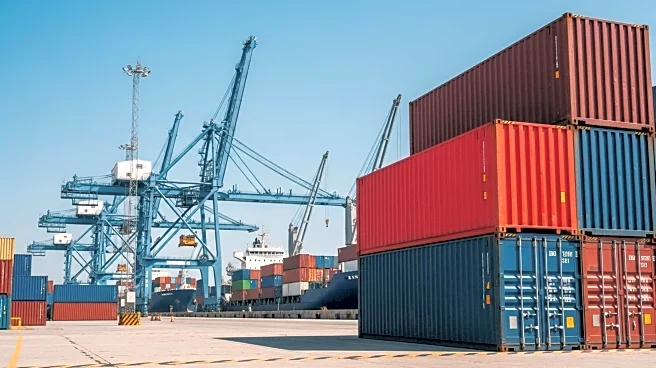What's Happening?
China's manufacturing sector is experiencing contrasting trends in 2025, with the official Purchasing Managers' Index (PMI) remaining below the growth threshold for five consecutive months, indicating weak domestic demand. However, the Caixin China General Manufacturing PMI, which focuses on export-oriented firms, rose to 50.5 in August, marking the fastest improvement in five months. This divergence highlights the resilience of China's export-driven segment despite evolving U.S. trade policies. The Caixin PMI targets smaller, export-focused firms that have adapted to U.S. tariffs by shifting to non-U.S. markets and focusing on high-value-added products. Despite challenges, such as a decline in new export orders, the extension of a U.S.-China tariff truce has provided temporary stability, allowing Chinese exporters to front-load shipments before tariff hikes.
Why It's Important?
The resilience of China's export-driven manufacturing sector amid U.S. tariff uncertainty is significant for global trade dynamics. While domestic manufacturing struggles, the adaptability of export-oriented firms suggests potential opportunities for investors focusing on sectors with global demand. The extension of the tariff truce has temporarily stabilized trade relations, but underlying tensions remain. The shift to non-U.S. markets and high-value-added products indicates a strategic adaptation that could influence global supply chains. However, the ongoing tariff landscape poses risks to China's export market share, affecting industries reliant on Chinese goods.
What's Next?
The future of China's manufacturing sector will likely depend on the continuation of the U.S.-China tariff truce and the ability of export-oriented firms to maintain their resilience. Investors may need to adopt a cautious approach, balancing domestic risks with export opportunities. The potential erosion of China's export market share due to tariffs could lead to shifts in global supply chains, prompting businesses to seek alternative suppliers. Monitoring the U.S. tariff landscape and China's strategic adaptations will be crucial for stakeholders navigating these uncertainties.
Beyond the Headlines
The ongoing U.S.-China trade tensions highlight broader implications for global economic stability and supply chain resilience. The adaptability of China's export-driven firms underscores the importance of diversification and strategic shifts in response to geopolitical challenges. The focus on high-value-added products and non-U.S. markets may lead to long-term shifts in global trade patterns, influencing economic policies and business strategies worldwide.












